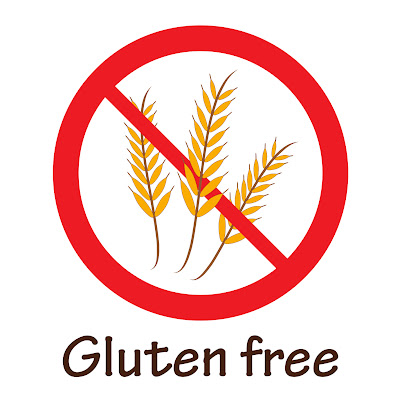9 Things Every Woman Should Know About Menstruation

By Anea Bogue
Last week, the mother of ‘The Bachelor’ candidate Gia Allemand, told Dr. Phil that “intense pre-menstrual syndrome” contributed to her daughter’s suicide this past August. It’s impossible to know for certain the degree to which PMS may have been a factor in this tragic end to Ms. Allemand’s life. But hearing this strikes a chord with many women because most of us can relate to some degree of intense feelings–ranging from mild irritation and carb cravings to the desire to escape to an island–in the days before we start our period.
The reality is that our menstrual cycle is extremely powerful and does impact the way we feel from one day to the next. It’s also true that we have heightened strengths during every phase of our cycle. Unfortunately, most of us don’t know about the intricacies of our cycle and how to really capitalize on these strengths because from the time we hit puberty we’re given very little information about it. Why? Because there is a long-standing and deeply-rooted taboo around the subject of menstruation.
The worst part is that we’ve gotten so used to not talking about it, we just sort of accept it and we perpetuate the silence. We forget that silence around a subject strongly suggests there is something ‘wrong’ or ‘shameful’ about it. It doesn’t dawn on us that when we tell girls and women that a fundamental part of being female is shameful, we obliterate their desire to truly know, protect and love their body.
And this silence around menstruation is killing us. In Gia Allemand’s case, a lack of understanding around what was going on hormonally and an inability to talk about it may have contributed to the literal loss of her life. For many others, the silence is killing our self-esteem, our desire to honor and fight for our bodies and our ability to reach our highest potential…because we’re so focused on what’s wrong with us as women.
It’s time to break the taboo by breaking our silence.
1. Menstruation Follows a 28-ish Day Cycle, Just Like The Moon. Many of us are told about the 5-7 day ‘period’ of bleeding, but not the whole series of amazing changes your entire body is cycling through over the course of 28-ish days. Just as the moon waxes (or grows outward into the night sky) until it becomes full and then wanes (or gets smaller) as if moving back into itself–so do you.
2. Your Period Isn’t the End. In Fact, It’s the Beginning. Day one (and phase one) of your menstrual cycle begins when your period arrives. Within hours of starting your period, your estrogen levels will slowly begin to rise and you will tend to feel a shift from the heaviness or ‘PMS’ of the days before. This is a time of release so it is a great time to let go of things you no longer need in your life: stuff, unhealthy relationships and emotions that may be weighing you down (anger, regret, anxiety).
3. Your Vagina Is One of the Most Porous Parts of Your Body. The lining of your vagina is one of the most absorbent parts of your body so if you use tampons during your period, it’s really important they are bleach and dioxin free. Since the EPA states there is NO SAFE LEVEL for dioxin exposure, 100% organic tampons are the safest option.
4. Estrogen = Energy, Enthusiasm & Expression. Throughout your Estrogen Phase (week 2), the steady increase in estrogen boosts your brain’s serotonin levels, which leads to an increase in energy, enthusiasm and a more upbeat feeling overall. It also heightens your verbal abilities so week two of your cycle is a great time to do presentations and have those important conversations.
5. If Your Cycle Were Ruled by a Queen, She’d Be Ovulation. Ovulation refers to the release of a tiny egg from one of your two ovaries (they alternate from one cycle to the next). This typically happens between Days 12-16, making it the time you are most likely to get pregnant. You are also likely to feel more attracted to others at this time and whether you believe it’s pheromones or just a healthy glow, others are likely to find you more attractive than ever, too!
6. Progesterone Heightens Introspection and Intuition. On the other side of ovulation, you’ll feel the effects of decreasing estrogen and testosterone and increasing progesterone. Progesterone is the ‘ebb’ to estrogen’s ‘flow’. It will increase your desire to move inward, like the waning moon. Research shows greater activity in the right hemisphere of the brain–the part associated with intuitive knowing–in weeks 3 and 4 of your cycle. Always trust your intuition. But pay especially close attention to it in the second half of your cycle!
7. Nutrition Profoundly Effects Your Cycle. You have the power to maximize each phase and reduce physical and emotional discomforts by maintaining a healthy, balanced diet and taking vitamins that support your female body. For example, increasing your magnesium intake (via food or supplements), especially in week 4 of your cycle, can significantly reduce cramping, while regular intake of vitamin B6 throughout your cycle can help to minimize bloating.
8. You’re Not Crazy! The Pre-Menstrual phase (week 4) consists of the final days before you begin a new cycle. Progesterone continues to rise until just before the end of this phase when estrogen, testosterone and progesterone all plummet to their lowest levels. If you deny the natural need you have to slow down and turn inward, feelings of resentment, frustration and anger find a way to surface. The solution? Give yourself permission to move a little slower and take care of YOU.
9. A Little PMA (Positive Menstrual Attitude) Goes a Long Way! Studies have shown that many of the less desirable physical and emotional manifestations of the Pre-Menstrual Phase (week 4) can be minimized by developing a more informed and positive attitude around your menstrual cycle.
For more information on this important topic, there are many great women dedicated to keeping women informed. Check out some of my very favorites: Vicki Noble, Dr. Christiane Northrup, Dr. Suzanne Gilberg-Lenz, Kristi Meisenbach Boylan, and Miranda Gray.























